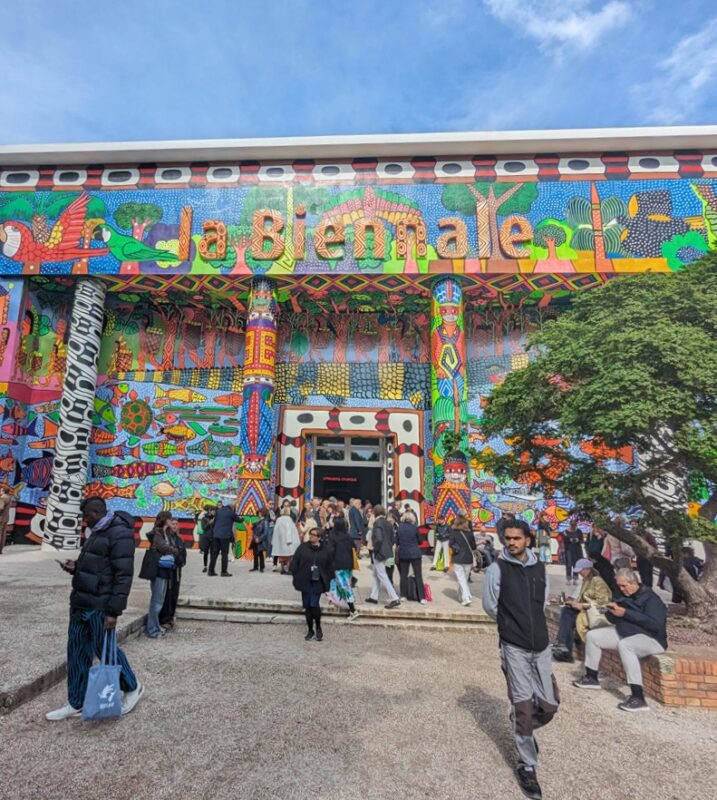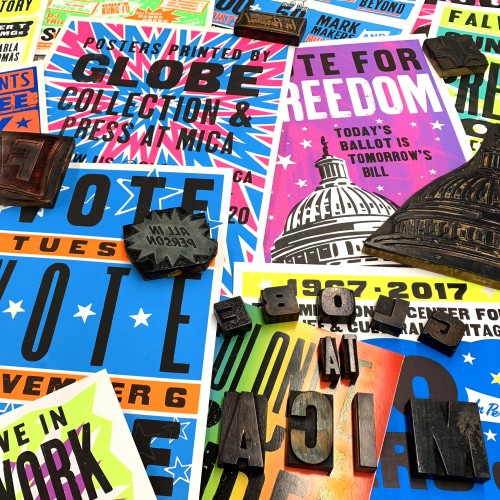Instituting Change: Guest Spot @ The Reinstitute is a new and improved art space. by Cara Ober
For those of us who loved the programming but hated the parking situation at Guest Spot Art Space, life just got better. After spending close to two years in a cozy Fells Point storefront and churning out a series of consistent, high-minded group exhibitions, Guest Spot has moved to a new and improved location in the Station North Arts & Entertainment District. The space is not just better because its rooms are palatial, with 12-foot ceilings and gleaming track lighting. There is now a sense of maturity and expansion about the place that comes from growth that has been earned and measured. This art venue is moving forward in a number of directions, conceptually as well as physically.
First, there’s the new name: Guest Spot @ The Reinstitute. What’s that about? Founder and curator Rod Malin explains that the two names are necessary to designate two separate projects. While Guest Spot will continue a curatorial, exhibition-based program, The Reinstitute is a new direction for Malin. The goal is ambitious: to provide support and infrastructure to artists, so that they can pursue scholarly research within the arts and “accredit themselves” professionally. Typically, this type of backing is filled by an academic institution in the form of a graduate degree or professional publication. Malin’s desire is to give artists the opportunity to pursue projects in their own way, without having to submit to the agendas or schedules of established cultural institutions.
“It’s a new idea, and we’re still working through it,” admits Malin. “Part of what we aim to do is critique the institution, which is a viable issue right now, in a time with so many degree programs for artists.” The goal of The Reinstitute is to work with a small handful of carefully selected artists each year, get involved with their studio practice, and provide the necessary support to help achieve their vision. The organization might provide exhibition or studio space, publish a book, curate an exhibition somewhere else, or help an artist utilize community resources and make connections. More than anything else, Malin envisions The Reinstitute as a safe place for artist-scholars to explore their own ideas and agendas.
Although the idea of mentoring artists in a scholarly practice might seem far-fetched to some, Malin’s prior curatorial endeavors attest to his devotion to the process.The work exhibited at Guest Spot tends to be brainy and esoteric—not everyone’s favorite, but always intellectually challenging. Also, each show has included an informal mentorship for artists and curators through strategic pairings between practitioners from Baltimore and New York, Malin’s former home.
The current exhibit, Comfort Zone, the first in the new location, is no exception. Malin and guest curator Lou Joseph, founder of the ICA Baltimore, worked through many drafts his curatorial statement, honing his ideas in a collaborative process, as opposed to simply showing up and hanging some artwork. The group exhibit features Grayson Cox, Ryan Hoover, Kim Faler, and Chloe Watson and examines expectations of privacy and comfort from the inside out. All four artists appropriate and recycle common items and images to present a skewed vision of domestic life.
Baltimore-based Ryan Hoover’s sculptures unite mechanical and organic characteristics into hybrid forms, which feel oddly complete, as if they made themselves through spontaneous generation. His largest piece, “Awkward Party 2012,” combines elements of a table, a chandelier, and kitchen utensils into an imposing, radial construction. Its bright purple and green colors, as well as its repeated curving legs and arms, give it a Dr. Seuss-ian association, but its mechanical aspects take it beyond cartoon. The piece includes a photopolymer 3D print, which accounts for its seamless construction, one that seems untouched by human hands.
Kim Faler’s paintings and sculpture take center stage in the exhibit, with a giant, hot pink painting called “Untitled (fence).” Constructed of two wood panels that lean on the ground, the piece glows like a Rothko from a distance, but up close there is a delicate, incised line drawing of a wonky chain link fence. I don’t know about you, but I’ve seen way too many paintings of chain link fences lately—but this one is arresting, due to its huge scale and bold color, which contrast mightily with the delicate lines. Another strong piece by Faler is “Current,” a 4-foot-high pile of stacked issues of the New England Journal of Medicine from 2005 to 2012. The magazines look relatively untouched—you can read the text on their spines—except that the top section appears to be dyed white and the rest dyed purple. The piece resembles a cairn or some other type of memorial stack and has an unexpectedly totemic, even nostalgic, presence. It makes me wish I hadn’t purged all my Bon Appetit’s from the kitchen cupboard.
Other works in the show are more ironic. “The Jerks” is a collection of hairdos without faces by Chloe Watson and is depicted in a book and print format. Grayson Cox’s screenprinted pillows are a fun departure from traditional printmaking. They transform banal imagery into contemporary pop art and emphasize the aesthetic quality of pillows, quite separate from their typical function.
Despite the demands that The Reinstitute requires, the new Guest Spot will continue to present group exhibits of local and non-local artists, with the possibility of adding some solo shows into the mix. Malin is looking forward to showing large scale architectural installations, an option that was not physically possible at the original, tiny space. “We also want to start a lecture series, workshops, and cross-disciplinary collaborations,” says Malin. “We want to create an intimate meeting space and bridge a lot of gaps in the art world.”










